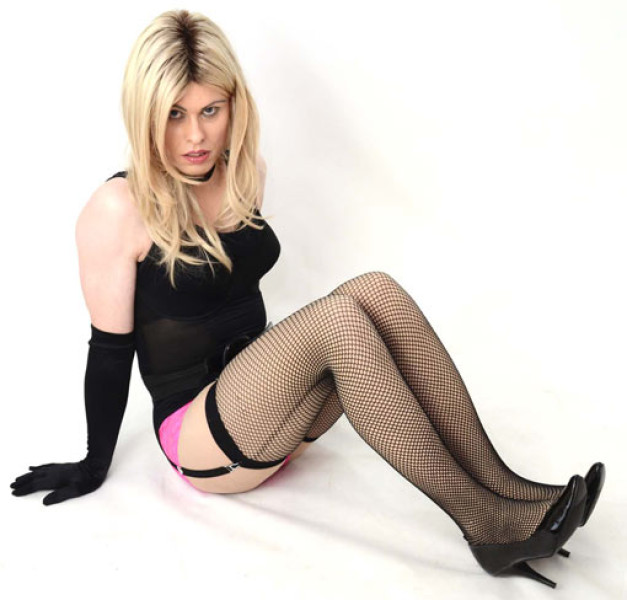Dina’s Diner 1/9/23
CULTURE CLASH
The Huffington Post had an interesting article in their Queer Voices section. When My Chinese Trans Identity Gets Lost in Translation appeared on the site December 23, 2022. It was written by Fei Lu, an accomplished and prolific writer on a number of topics including trans issues. Her personal page is here.
Fei Lu sets the impetus for her article this way: “Four years ago, I wrote an article about my coming-out experience with my mother. I discussed how I navigated my transgender and Chinese identity when talking with her. During the drafting process, the editor I was working with suggested that I gave my mother too much “leniency” when it came to my family acknowledging my new gender identity. I went along with it, but looking back, I realize that the article had one too many influences from American notions of transgender discourse than I would have liked.”
She points out that in Chinese culture “sons carry the responsibility of continuing the family lineage. This patriarchal idea of family preservation is directly tied to the philosophy of Confucianism, one of the most influential Chinese schools of thought.” Fei Lu’s mother did accept her trans identity after what Fei realizes was probably some initial regret or confusion that she perhaps still harbors. “But three years later, in 2022, calling me her daughter in Chinese and using she/her pronouns in English comes naturally to her. Even today, though, I don’t care how she genders me as long as it implies that I’m her child.”
What Fei Lu refers to as American or Western sensibilities do not match up evenly with Chinese cultural traditions or even language. It hasn’t stopped some non-Chinese trans and people of color to advise her how she should interact with her mother or culture to conform to their concepts. It sounds maddening and the even tone of Fei Lu’s essay shows remarkable restraint in not firing back more vehemently.
She writes this in a measured voice: “Yet another example is when I talk to white trans people about the concept of “passing” and how I feel more comfortable passing than being visibly transgender, they’re quick to label me as self-hating. What these individuals refuse to acknowledge, though, is that it’s hard enough being Asian in white professional and social spaces already; I don’t need my marginalized gender identity to be another obstacle to my moving through life as easily as possible.”
As I read the HuffPost piece, it occurred to me that issues like family relationships and cultural interactions happen along a spectrum just as we think of gender itself. On either end are the extremes – total acceptance or total denial. In the middle are various measures of one or the other with allowances by each party depending on very individual and personal attitudes. Just think of your own relationships with family, friends, neighbors, etc. We can’t squeeze every interpersonal relationship into a neat box with no messy rips or bulges. Other trans activists should know – perhaps better than others – how difficult it is to walk in the shoes of another and reconsider their criticisms.
IS LESS MAKEUP MORE?
The New York Times had an article about fashion and cosmetic maven Trinny Woodall in the December 21, 2022 Style section. Trinny Woodall was one of the British hosts of the What Not To Wear television show in the UK and has launched a cosmetics line. The article was headlined What Not To Wear On Your Face.
The Times article led with this quote by Ms. Woodall: “I have never met somebody who covers their whole face in foundation who needs it. Start where you need it the most and blend out.” In another article on Nine.com, Trinny told their reporter, “Most women are also guilty of applying their base wrong by starting on their cheeks instead of in the T-zone; your forehead, nose and chin. These areas tend to need the most product, so by starting there first you can blend outwards and use less product on the sides of your face. You’ll end up with a more even, balanced base and save money on makeup in the long run.”
Woodall is 58 years old so her followers are mostly in the same age group. This makes her cosmetic advice more apropos for middle-aged crossdressers. We generally need more cosmetic coverage than cis-women or younger gurls but perhaps we can find ways to minimize the use of foundation to find that optimal point.
There was further advice I found interesting in the Nine article. “One of the first big mistakes women make is using the same makeup for decades, even when it no longer fits their beauty needs and skin concerns. “Everyone should reconsider what they use for a base,” Trinny says, especially if you’re someone who uses heavy foundation every day. Many women start using full coverage products but end up using overly heavy products. Instead, Trinny urges them to try lighter products that let you build coverage in areas of concern. She also encourages mature women to “allow your skin to have a little glow.”” She advised the Times readers, “Think about how much powder is on the skin, because it will sit and look tired.”
Cosmetics can be fun to play around with but can also be a confusing landscape to traverse for many crossdressers. We don’t have as much opportunity to get better with them and it’s difficult to know the best products to buy for our individual makeup needs. Trinny told the Times reporter something that rang true for crossdressers as well as her target cis-female audience. “You know, we have some women who feel a bit lost and they need a reset,” she said. Amen to that, sister.
THESE BOOTS. . .
The New York Times had an article about women’s boots in the December 28, 2022 Style section. It was headlined What Do You Dream Boots Look Like? In the article, the writer Marisa Meltzer went on a “Goldilocks-style search for the perfect pair of tall boots.”
As you have probably noticed, there are dozens, maybe hundreds of unique designs for women’s boots. The report noted that some boots rise higher towards the knee, some are stiffer and do not show the curve of the calf, some are stretchy and perhaps less boot-like as a result. Then there are the myriad heel styles and heights from flat to chunky to stiletto. So finding the perfect pair is indeed difficult if you have a specific reason (commuting, partying, weather protection) for purchasing boots.
Boots in the crossdressing world often have a fetish element. (I haven’t even mentioned over-the-knee boots). I understand the appeal although I’ve never owned or even considered owning boots. It seems like it would be difficult to find a pair of boots that could accommodate a male calf and ankle in combination with the shoe size. It’s hard enough to find pumps that fit halfway comfortably. And that’s another thing: you can’t just slip out of boots for a few minutes of relief if your dogs are barking.
There is, however, something about a woman in a nice pair of boots. I still remember seeing a striking woman wearing a fur coat and beautiful boots in the commuter mall beneath snowy Montreal. And the woman who showed up in over-the-knee boots at work one day. Hubba-hubba. The pairing of riding boots with tight jodhpurs on a lady still works for me although I hardly know which end of a horse is which.
It’s wintertime and boot season is here. If you have a pair (or more) let me know (and see) why you like them so much. Maybe I’ll have to do my own Goldilocks-style search for the perfect boots.
PRETTY AS A PICTURE
I saw another article with advice about taking selfies. I’ve covered this topic in a couple of previous Diners but since photo-taking and photo posting online is important for many crossdressers I think it’s always helpful. I saw this on a site called popphoto.com. It was headlined Make Every Photo a Potential Profile Photo By Learning How To Pose. It first appeared in September 2019.
 The author (a fellow named Harry Guinness) runs through several pitfalls in taking headshots. These include: the forced grin; the deer in the headlights; and multiple chins. In the crossdressing universe (for the Diner audience) I’ve seen a lot of ladies go for the smoldering look without smiling. But if you are smiling too hard, Mr. Guinness says, “all the muscles in my face are being violently pulled in opposite directions. It looks like I’m being electrocuted.” I’ve noticed as I got older my eyes seem to be smaller and if wearing false eyelashes they can almost disappear if not posed properly. The simple cure would be to open wide when snapping a photo. But Mr. Guinness points to his example and says, “my eyes are so wide I look startled. Some consider big eyes a beautiful feature but forcing them open will certainly not make you look better.” Another pitfall is that – even though we may be all alone when taking our selfie – we sometimes freeze up and involuntarily tuck our chin into our necks. He remarks below a purposely botched selfie, “My head is not in a good place in this photo; or after looking at it. We all have necks, so we might as well just use them.” Bring your face forward slightly to get some definition for your jawline.
The author (a fellow named Harry Guinness) runs through several pitfalls in taking headshots. These include: the forced grin; the deer in the headlights; and multiple chins. In the crossdressing universe (for the Diner audience) I’ve seen a lot of ladies go for the smoldering look without smiling. But if you are smiling too hard, Mr. Guinness says, “all the muscles in my face are being violently pulled in opposite directions. It looks like I’m being electrocuted.” I’ve noticed as I got older my eyes seem to be smaller and if wearing false eyelashes they can almost disappear if not posed properly. The simple cure would be to open wide when snapping a photo. But Mr. Guinness points to his example and says, “my eyes are so wide I look startled. Some consider big eyes a beautiful feature but forcing them open will certainly not make you look better.” Another pitfall is that – even though we may be all alone when taking our selfie – we sometimes freeze up and involuntarily tuck our chin into our necks. He remarks below a purposely botched selfie, “My head is not in a good place in this photo; or after looking at it. We all have necks, so we might as well just use them.” Bring your face forward slightly to get some definition for your jawline.
There are also suggestions to adopt certain postures and attitudes to the camera for optimal results. Angle your body slightly rather than stand straight-on. Use a slight squint (but not a ‘Zoolander’ he warns) to make your eyes seem focused and alert. Combine that with an understated smile to appear confident and friendly.
The article seems designed to improve readers’ Facebook, LinkedIn, or dating profiles but it works for our purposes too. The motivation to crossdress involves many psychic elements but it’s also (to a large degree for most of us) about looking pretty. Since going out is often not possible, photo posting on crossdressing sites is often the only chance to go public and meet people. Check out the original article and optimize your portfolio.
CATCH OF THE DAY
I stumbled across a headline that caught my eye recently. The Strange, Sexy History of Fishnet Stockings appeared on a site named I-D.vice.com back on June 27, 2017. It still surprises me a bit to think that 2017 was five and half years ago but the intervening years haven’t had any effect on the history of fishnet stockings.
If you are not a fan of fishnet stockings (or tights) you can stop reading. I have a feeling I’m not losing anyone because men (whether crossdressers or nay) love fishnet stockings. I know I certainly do. But when I saw the article headline I was intrigued about the history of fishnets.
The article reported: “Fishnet tights have been symbolic of womanliness and female sexuality since their emergence at the turn of the 19th century. Fashion historian Valerie Steele hypothesizes that fishnet tights arrived when a late-Victorian fad for all things lace commingled with the era’s fetishization of stockings — itself the result of floor-skimming Victorian dresses and the teasingly limited glimpses of women’s legs they afforded. The tights’ popularity exploded with the advent of flappers in the 1920s. Fishnets were the perfect leg covering for the age of higher hemlines because they didn’t cover too much. Their flexible construction could also withstand energetic dancing.” The article expounded further that the presence of unchaperoned flappers in the more liberal Roaring ’20s linked fishnets’ “association with after-dark entertainment and sex.”
When I was of a formative age, fishnet tights were (and still are) a standard accessory for showgirls in spangled outfits and headdresses. Cheesecake pinup photos of starlets and even famous sex bombs of the ’50s and ’60s almost always featured fishnet tights. The article says, “Fishnets are by nature a tease: a revelation of flesh masquerading as a covering. The unique power of fishnet tights is that their stretchy grid-like weave visibly distorts over rounded forms, highlighting curves magnificently.”
Fishnet stockings paired with garters have always been seen in erotic pictorials or films. The article points out that the subversive nature of fishnet stockings was used to great effect in The Rocky Horror Picture Show. Dr. Frank N. Furter sports the ‘nets and eventually “when virginal honeymooners Brad and Janet re-emerge in corsets and fishnet stockings, it is a true sign of their sexual awakening.”
It’s also true that fishnet as an accessory for legs, arms, or torsos has hung in there through the decades. Sometimes – like during the ’80s punk movement – they came to the fore as a symbol of rebellion, often ripped or disheveled looking. Every so often you will see fishnets being worn as part of an everyday outfit. Crossdressing photo sites prove their staying power as symbols of sex appeal for part-time women of all ages. And I don’t see that ever going away. Thank goodness.
Category: History, Transgender Fun & Entertainment






